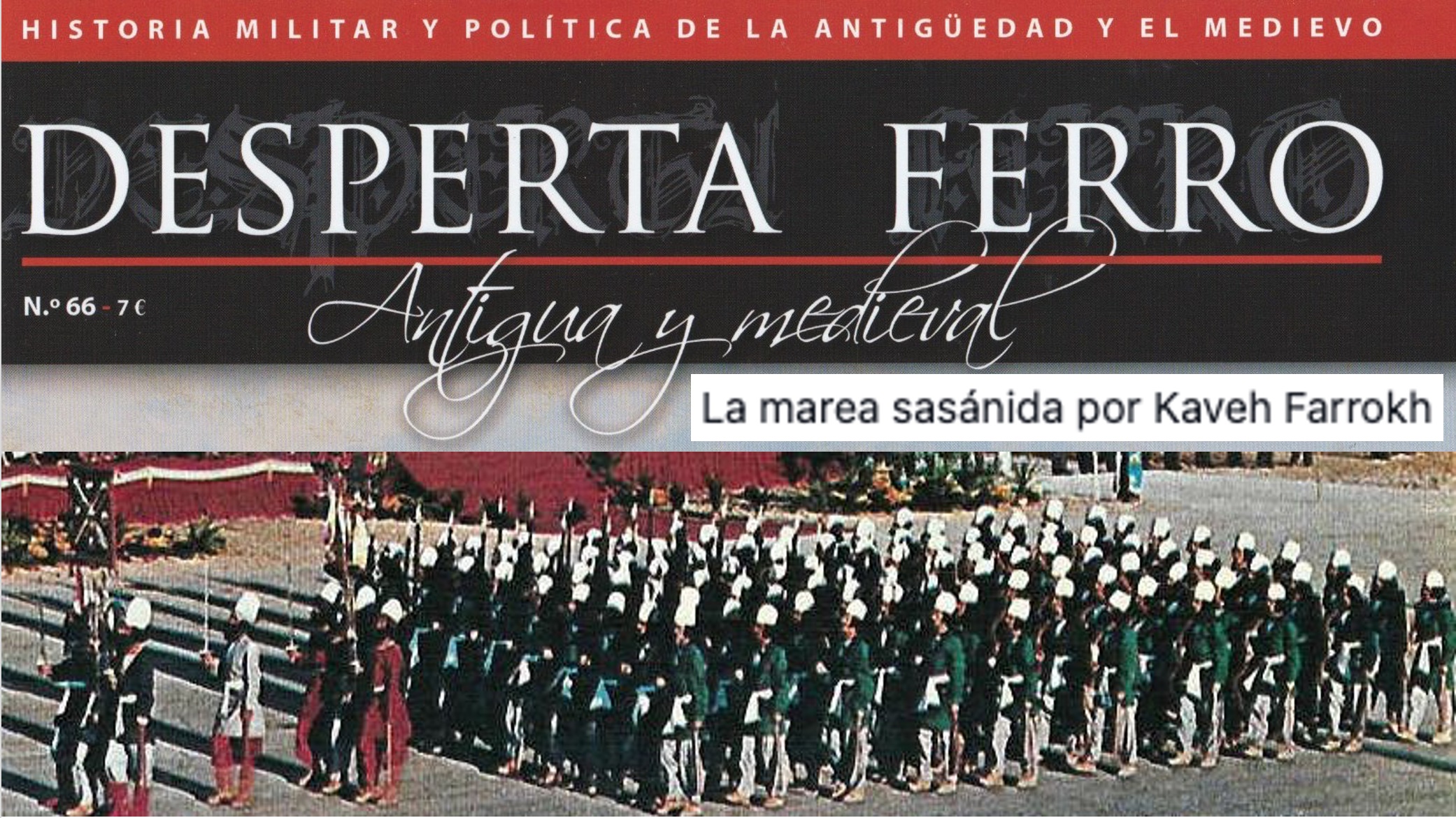The prestigious Spanish military journal “Desperta Ferro Antigua y Medieval” has published an article by Kaveh Farrokh on the military offensives of the Spah (the Sassanian military) against the Romano-Byzantine Empire in 603-622 CE. More specifically, this article examines the Sassanian military offensive launched by Khosrow II in 603 CE (or late 602 CE) against the Romano-Byzantine Empire. For more information on this article, click the link below in Academia.edu:
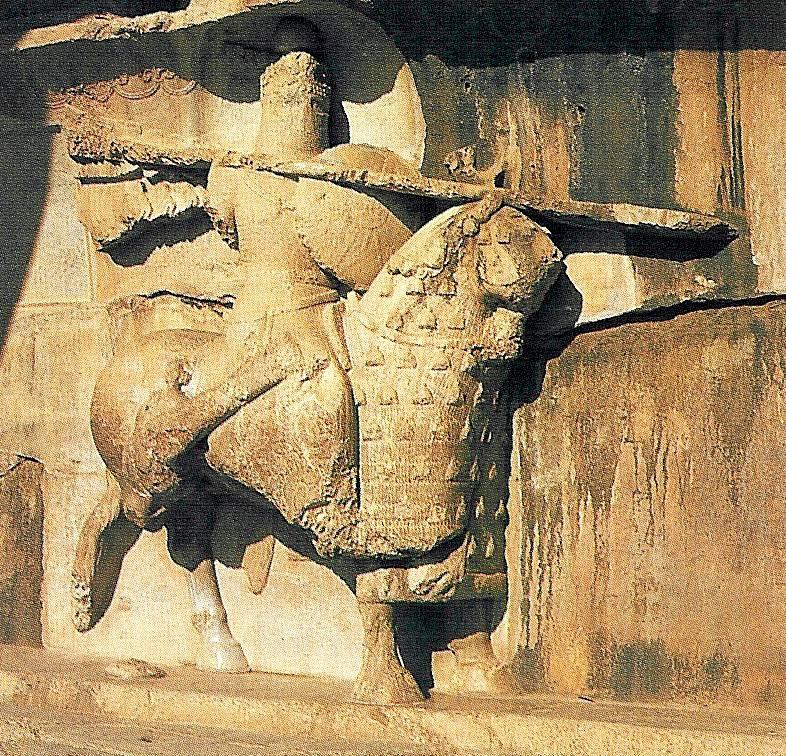
An excellent depiction of late sassanian knights at Taghe Bostan. The figure is often identified as Khosrow II “Parviz” and his steed, Sabdiz (Picture source: Farrokh, page 225, Shadows in the Desert: Ancient Persia at War-Персы: Армия великих царей-سایههای صحرا–).
The initial phase of the offensives occurred in 603 CE in which the Spah (army) defeated the Byzantines at Arxamous with the fall of Dara (604 CE) also being discussed.
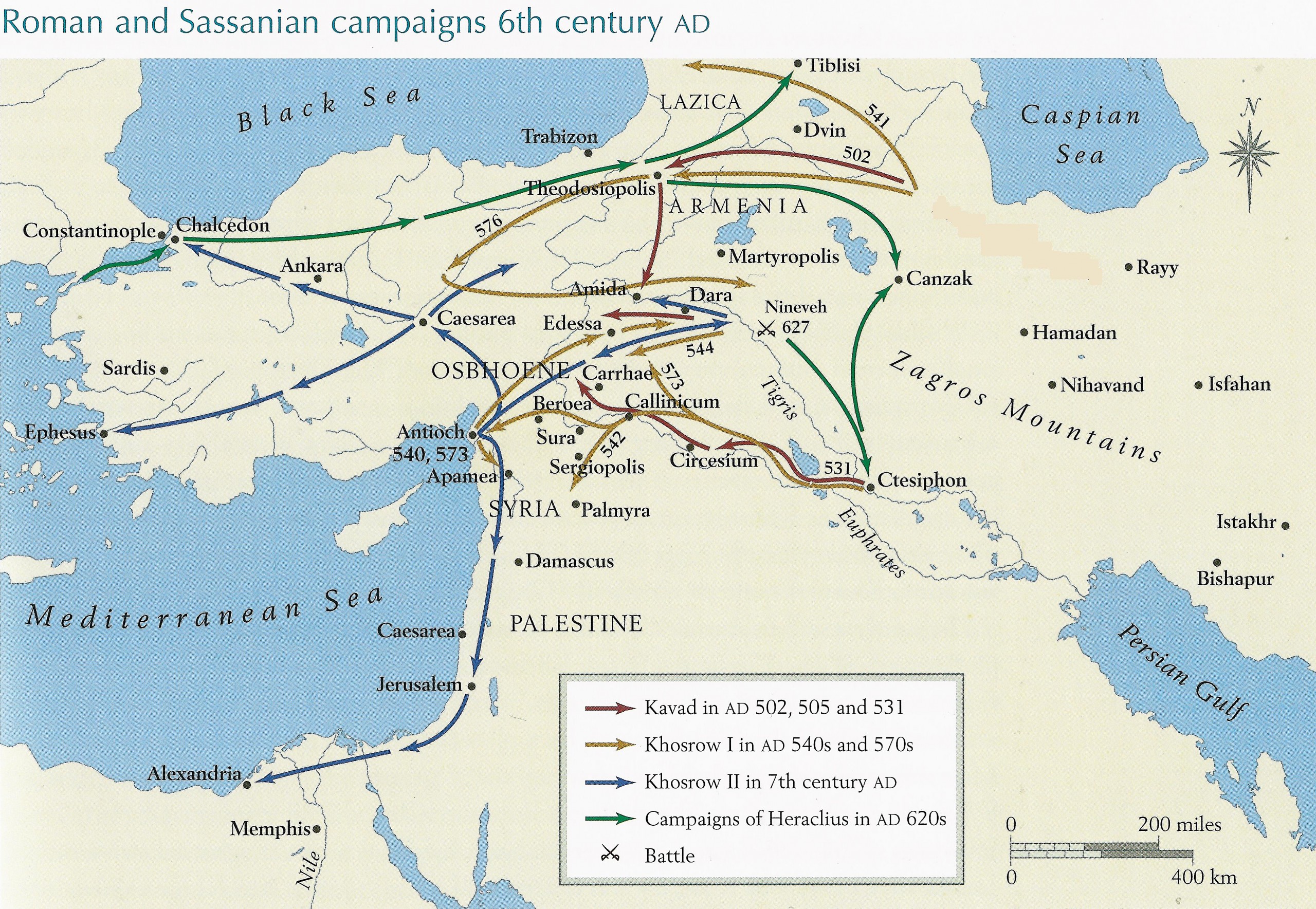
Map of the Sassanian and Roman campaigns of the 6th century CE (Picture source: Farrokh, page 233, Shadows in the Desert: Ancient Persia at War-Персы: Армия великих царей-سایههای صحرا-). The end result of the ensuing long and devastating Romano-Sassanian wars of the early 7th century CE was the creation of a military vacuum which was to be adeptly exploited by the Arabo-Islamic invasion forces of the newly established Caliphate in Arabia.
The fall of Dara led to the Spah’s expansion of military operations with the goal of expelling the Byzantines from the entire Near East and the southern Caucasus, notably Mesopotamia, Syria, Lebanon, Palestine, Anatolia and Armenia. Even Egypt in North Africa was to be targeted by the Sassanian forces.
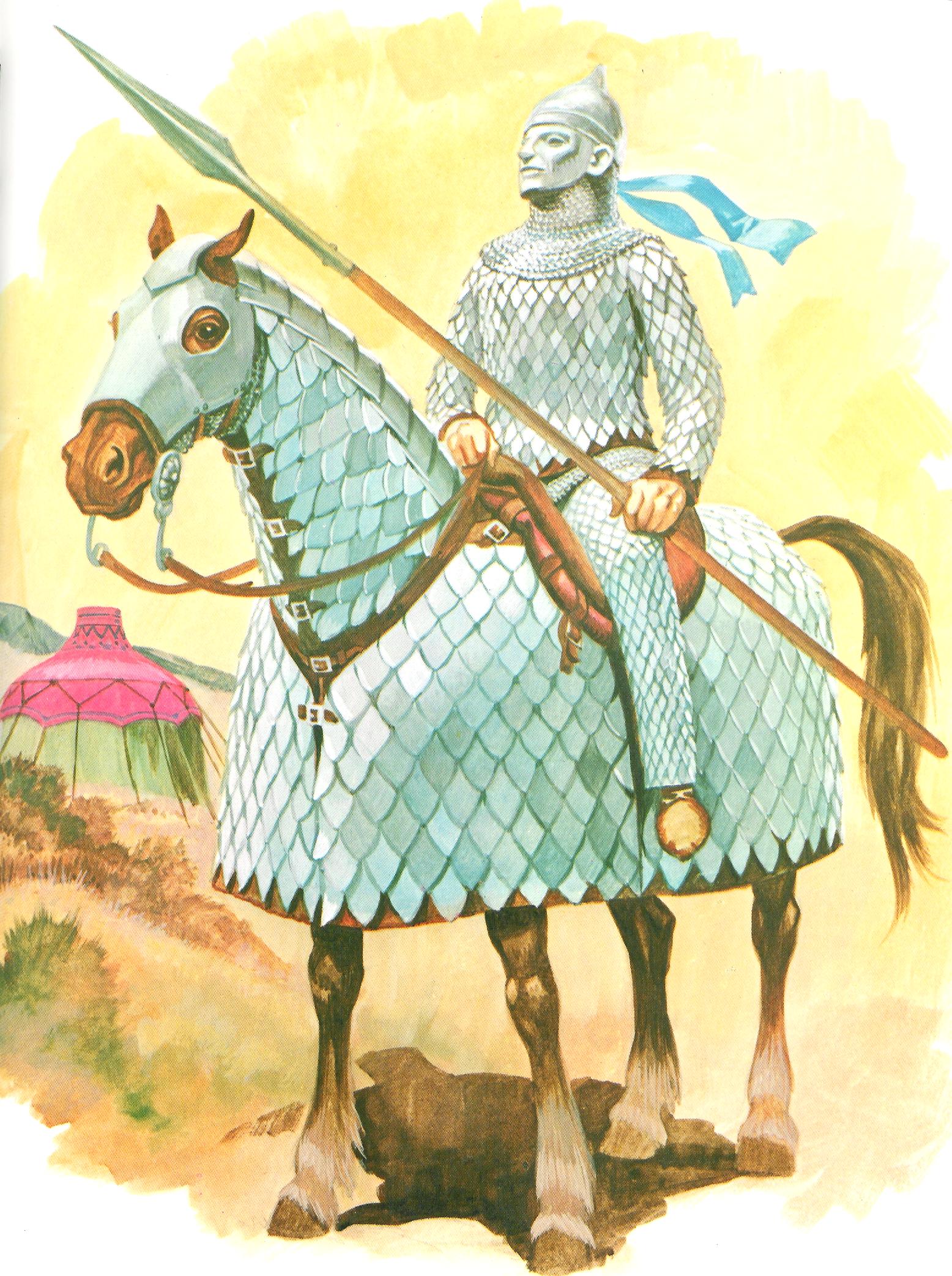
Romano-Byzantine armored cataphract based on Sassanian models as depicted by Ransford. Although the picture is not wholly accurate (later Romano-Byzantine cataphracts used combinations of armor, including mail – Ransford’s model uses only scale mail which was typical of the earlier Scythians, Sarmatians and Parthians). Nevertheless, Ransford’s depiction is of interest as it shows the dedication of the Romano-Byzantines to create a cavalry force capable of standing up to the Savaran of Iran (Picture source: pp.39, Simon Ransford, War Machines: Land – from the Primitive Weapons of Stone Age man to Rocket-assisted Grenades, London: Octopus Books, 1975). This picture has been displayed as part of Kaveh Farrokh’s lectures at the University of British Columbia’s Continuing Studies Division and Stanford University’s WAIS 2006 Critical World Problems Conference Presentations on July 30-31, 2006).
The military operations of the Spah during these campaigns in 602-622 CE led by generals such as Shahrbarz, Shahen and Datoyean are examined.
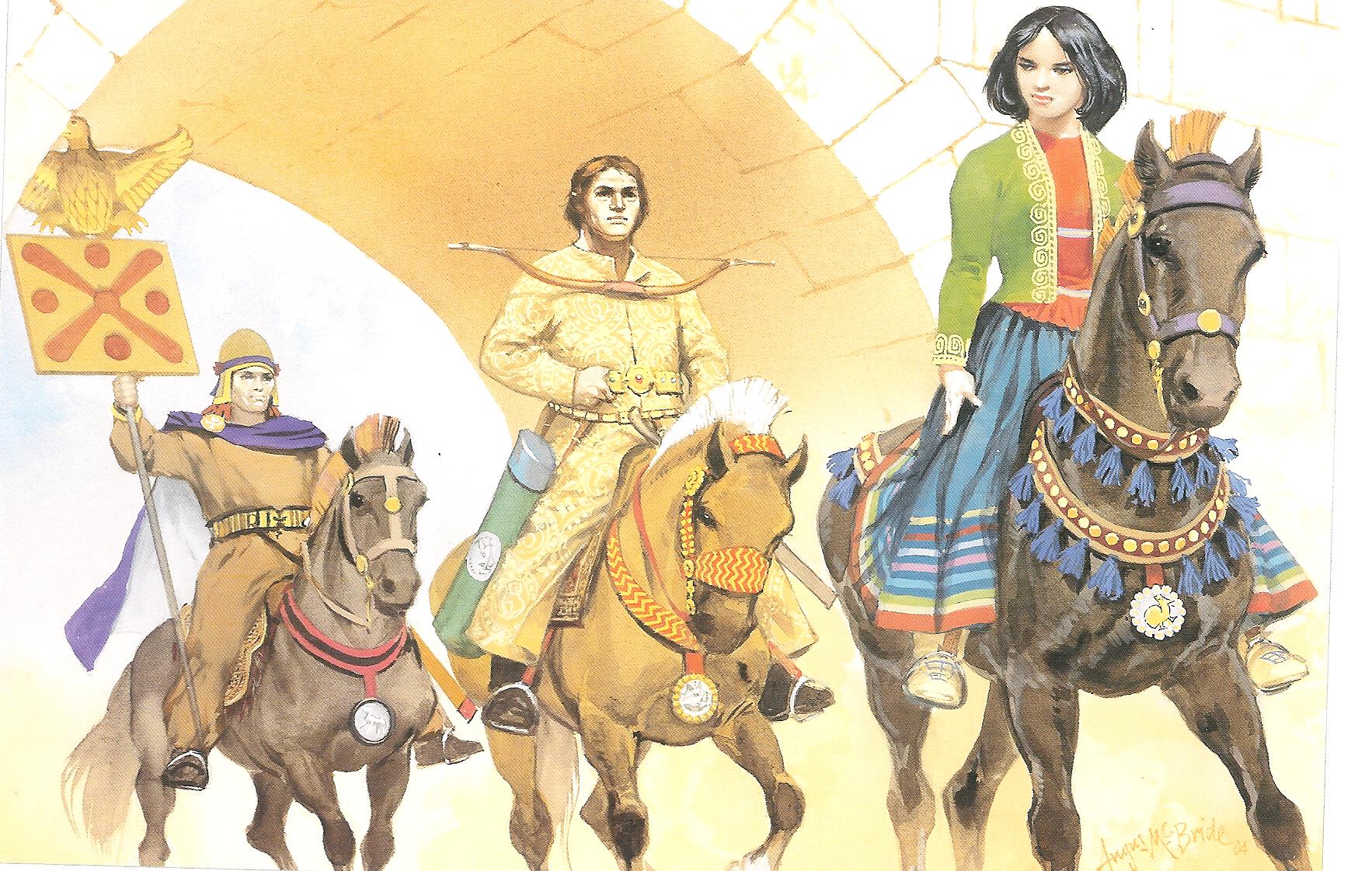
A reconstruction of the late Sassanians at Ādur Gušnasp or Shiz (Takht e Suleiman in Azarbaijan, northwest Iran) by Kaveh Farrokh (painting by the late Angus Mcbride) in Elite Sassanian Cavalry-اسواران ساسانی-. To the left rides a chief Mobed (a top-ranking Zoroastrian priest or Magus), General Shahrbaraz (lit. “Boar of the realm”) is situated in the center and princess (later queen) Boran (Poorandokht) leads to the right.

